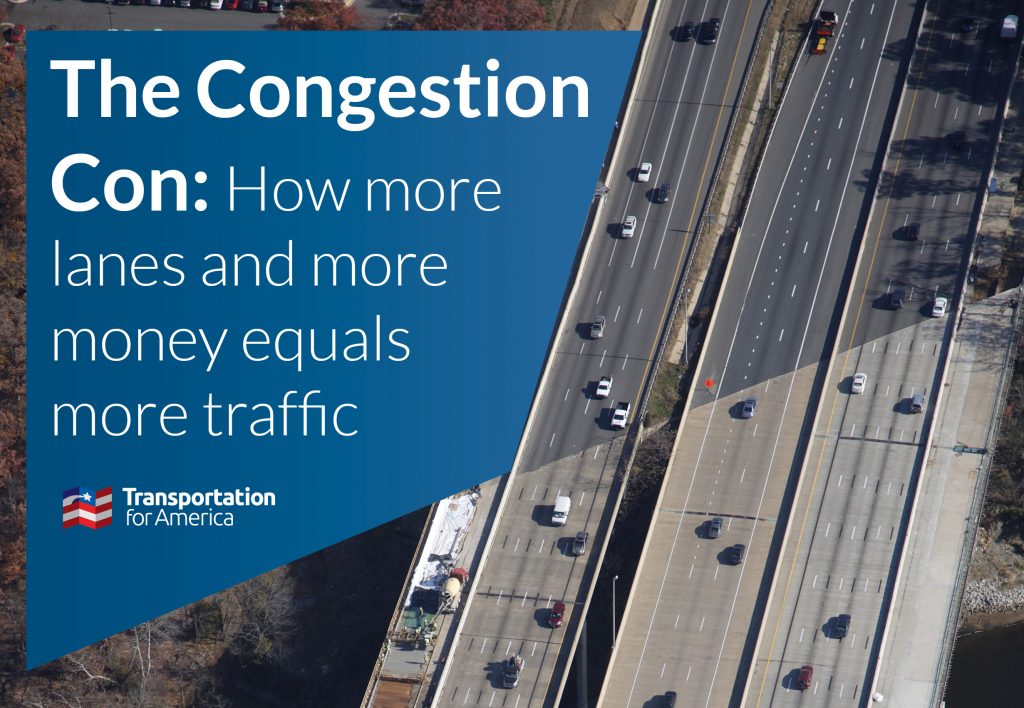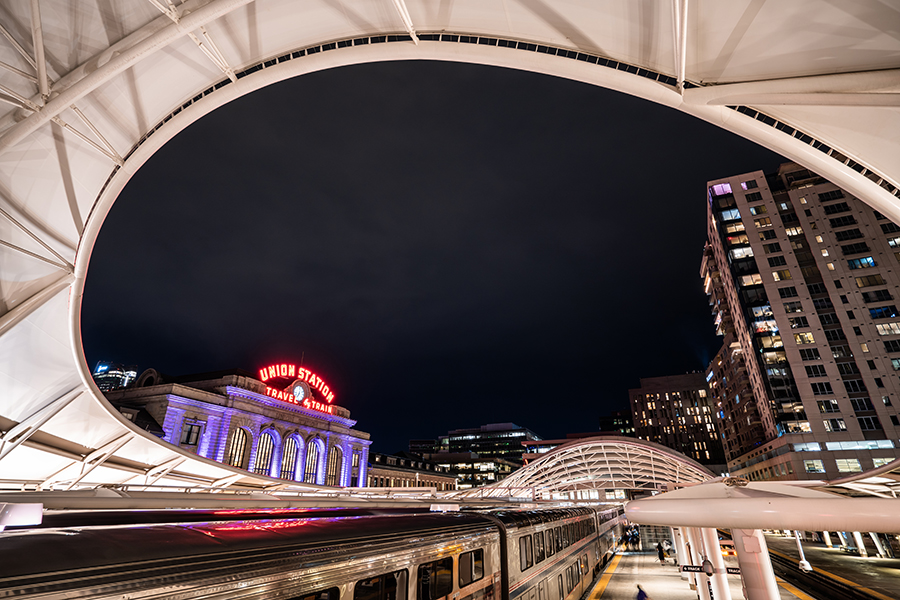Plans are well underway for a new regional rail route connecting communities in Colorado’s Front Range, one of the fastest-growing regions in the country. The Front Range runs nearly 200 miles along the eastern foothills of the Rocky Mountains—south to north from...
“We need to face the music,” according to Transportation for America. “We are doubling and tripling down on a failed strategy.”
The U.S. has tried for decades to build its way out of congestion problems by adding new roads and highways. The result—as detailed by T4America’s new report, The Congestion Con—is ever-more congestion and gridlock.
The report analyzed 100 urban areas from 1993 to 2017 and found that the rate of growth in new freeway-lane miles exceeded population growth—42 percent versus 32 percent. But rather than declining, congestion increased by 144 percent.
And “all those new lane-miles haven’t come cheap,” T4America notes. “States alone spent more than $500 billion on highway capital investments in urbanized areas between 1993-2017, with a sizeable portion going to highway expansions. And the initial construction costs are just the tip of the iceberg. For roads that are already in good condition, it still costs approximately $24,000 per year on average to maintain each lane-mile in a state of good repair, creating significant financial liabilities now and for years into the future.”
T4America also offers several policy recommendations for putting the U.S. on a sustainable and affordable path. They include prioritizing “access”—that is, connecting people to jobs and services “instead of focusing narrowly on speed and delay.”Congress is now debating the Fast Act Re-authorization, which will have a significant near-term impact on national rail policy and funding. Sign the HSRA petition here.
Read More:
The Latest from HSRA
Our Latest Blog Posts
Check out the latest news, updates, and high speed rail insights from our blog!



